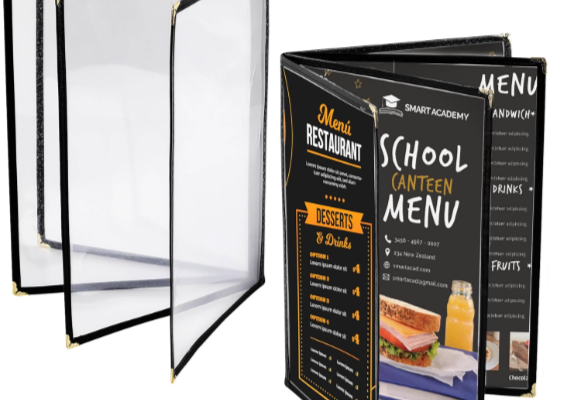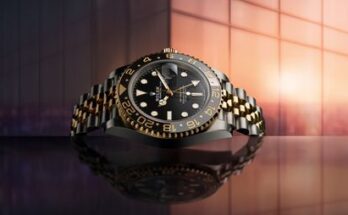Restaurant and cafe owners face countless decisions about where to invest their limited budgets. While kitchen equipment and staff training rightfully claim priority, one often-overlooked element can significantly impact your bottom line: custom menu covers. These seemingly simple items serve as your brand’s first handshake with every customer, yet many establishments settle for generic alternatives that fail to capture their unique personality.
The good news? Creating professional, branded menu covers doesn’t require breaking the bank. Today’s manufacturing technologies and material innovations have made custom menu covers more accessible than ever, allowing even the smallest cafes to present themselves with the same polished professionalism as established fine dining establishments.
Smart restaurant owners understand that menu covers aren’t just protective accessories—they’re marketing investments that work around the clock. Every time a customer picks up your menu, they’re experiencing your brand through tactile and visual cues that influence their perception of food quality, service standards, and overall value. The challenge lies in finding cost-effective solutions that deliver maximum impact without compromising on durability or aesthetic appeal.
Understanding Your Custom Menu Cover Options
The menu cover industry offers a surprising range of customization options at various price points. Basic customization might include adding your logo through screen printing or heat stamping, while more elaborate options could feature embossed logos, custom colors, or unique material combinations.
Screen printing remains one of the most economical customization methods, particularly effective for bold logos and simple color schemes. This technique works well on vinyl, faux leather, and fabric materials, offering excellent durability at minimal cost increases over generic covers.
Digital printing has revolutionized small-batch customization, making full-color designs affordable even for single-location restaurants. This process allows for photographic images, complex logos, and gradient colors that weren’t cost-effective with traditional printing methods.
Heat stamping and embossing add tactile elements that create premium perceptions without premium price tags. These techniques work particularly well for simple logos or text elements, providing elegant results that suggest quality craftsmanship.
Budget-Friendly Material Choices That Deliver Style
Vinyl menu covers offer exceptional value for money, combining durability with customization flexibility. Modern vinyl options include textured surfaces that mimic leather, wood grain, or fabric while providing superior stain resistance and easy cleaning. Many restaurants find that quality vinyl covers outlast more expensive materials in high-traffic environments.
Faux leather alternatives have improved dramatically in recent years, offering appearance and feel that rivals genuine leather at a fraction of the cost. These synthetic options often provide better stain resistance and color consistency than their natural counterparts, making them practical choices for busy establishments.
Recycled and eco-friendly materials appeal to environmentally conscious customers while often costing less than traditional options. Materials like recycled cardboard, hemp fiber, or cork can be customized with various printing techniques and offer unique textures that create memorable customer experiences.
Laminated paper covers provide the most economical entry point for full customization. While not as durable as other options, they allow for complete design freedom and can be cost-effectively replaced as needed. This option works well for seasonal menus or establishments that frequently update their offerings.
Maximizing Impact Through Smart Design Choices
Effective menu cover design doesn’t require expensive graphic design services or complex layouts. Simple, clean designs often prove more memorable and cost-effective to produce than elaborate alternatives. Focus on one or two key elements—your logo and perhaps a signature color—rather than trying to incorporate every aspect of your brand identity.
Typography choices significantly influence both aesthetic impact and production costs. Standard fonts available in most printing processes cost nothing extra, while custom typography or hand-lettered elements add to production expenses. Many successful restaurants build strong brand recognition using carefully chosen standard fonts consistently across all materials.
Color selection affects both visual impact and production costs. Single-color printing costs significantly less than multi-color options, but strategic color choices can create sophisticated looks without additional expense. Consider using your signature brand color as an accent against neutral backgrounds for maximum impact at minimum cost.
Size standardization helps control costs while ensuring compatibility with existing menu inserts. Most manufacturers offer better pricing for standard sizes, and you’ll avoid the expense of reprinting menu pages to fit custom dimensions.
Strategic Timing for Menu Cover Investments
Restaurant cash flow often fluctuates with seasonal patterns, making timing crucial for any investment. Many suppliers offer better pricing during slower industry periods, typically January through March for most markets. Planning your menu cover updates during these periods can result in significant savings.
Bulk ordering reduces per-unit costs substantially, but requires balancing savings against storage requirements and cash flow constraints. Consider partnering with other local establishments for combined orders, or time your purchase to coincide with other promotional materials needs.
End-of-year budgeting often provides opportunities for equipment purchases that can be expensed immediately. Menu covers typically qualify as operational supplies, making them attractive year-end purchases for tax planning purposes.
Seasonal menu changes provide natural timing for cover updates. Rather than viewing this as an additional expense, consider how new covers can reinforce seasonal marketing efforts and create buzz around menu changes.
Working with Suppliers for Best Value
Establishing relationships with menu cover suppliers can yield significant long-term benefits beyond initial cost savings. Suppliers familiar with your needs can suggest cost-effective alternatives and alert you to promotional pricing opportunities.
Sample programs allow you to evaluate materials and printing quality before committing to larger orders. Most suppliers provide samples at minimal cost, and this investment prevents costly mistakes in material selection or design execution.
Local suppliers often provide competitive pricing while offering advantages in communication, delivery time, and problem resolution. Don’t assume national companies always offer better deals—local manufacturers frequently match or beat larger competitors’ pricing while providing superior service.
Digital proof services help ensure design satisfaction before production begins. While there might be small charges for proof revisions, these costs pale compared to correcting problems after full production runs.
Measuring Return on Investment
Custom menu covers provide measurable returns through several channels. Customer perception studies consistently show that professional presentation influences willingness to try higher-priced menu items and creates positive associations with food quality.
Social media impact has become increasingly important as customers photograph their dining experiences. Attractive menu covers appear in countless social media posts, providing free advertising that extends far beyond your restaurant’s walls.
Staff pride and confidence increase when they’re presenting professionally branded materials. This psychological boost often translates to better customer service and increased sales through more enthusiastic menu descriptions and recommendations.
Durability calculations reveal the true cost-effectiveness of quality custom covers. While generic covers might cost less initially, frequent replacements due to wear, staining, or damage quickly erode any savings. Quality custom covers that last several years often cost less per month of use than cheaper alternatives.
Implementation Strategies for Different Restaurant Types
Quick-service establishments benefit from wipeable materials and simple, bold designs that communicate efficiently in fast-paced environments. Laminated options or vinyl covers work well for menus that need frequent updating or heavy use.
Casual dining restaurants can leverage moderate customization budgets for covers that enhance ambiance without overwhelming food presentation. Faux leather with embossed logos creates upscale perceptions while maintaining practical durability.
Fine dining establishments should view menu covers as integral to the premium experience their customers expect. Even budget-conscious fine dining venues can achieve luxury presentation through strategic material choices and refined design approaches.
Cafes and coffee shops often benefit from covers that photograph well for social media sharing. Eco-friendly materials can reinforce sustainability messaging that resonates with typical cafe customers.
Smart Shopping Strategies
Research multiple suppliers before making decisions, but don’t assume the lowest quoted price represents the best value. Factor in shipping costs, minimum order quantities, and production timelines when comparing options.
Ask about setup fees and their applicability to reorders. Some suppliers charge setup fees for each order, while others waive these for repeat customers using existing designs.
Inquire about volume discounts that might apply to future orders, even if your initial purchase doesn’t qualify. Understanding these thresholds can help you plan future purchases more strategically.
Your Menu Cover Investment Decision
Custom menu covers represent one of the most cost-effective branding investments available to restaurants and cafes. Unlike advertising that provides temporary exposure, menu covers work continuously to reinforce your brand message and create positive customer impressions.
The key to success lies in viewing menu covers as long-term brand-building tools rather than simple operational necessities. By investing in quality customization that reflects your establishment’s personality and values, you create customer experiences that encourage repeat visits and positive word-of-mouth recommendations.
Whether you’re opening a new establishment or refreshing an existing brand presentation, affordable custom menu covers offer accessible entry points to professional restaurant marketing. Start with your specific needs and budget constraints, then explore the customization options that deliver maximum impact within your parameters.
Remember that your menu cover often represents your restaurant in customers’ minds long after they’ve left your establishment. Make that representation count with thoughtful customization that communicates your commitment to quality and attention to detail.




